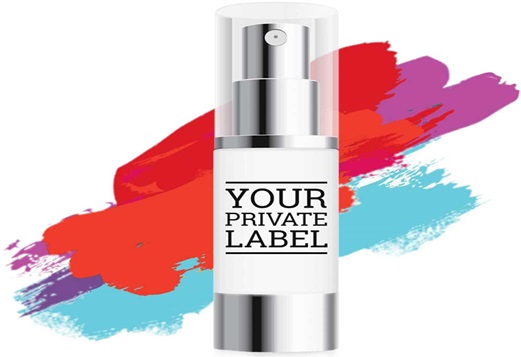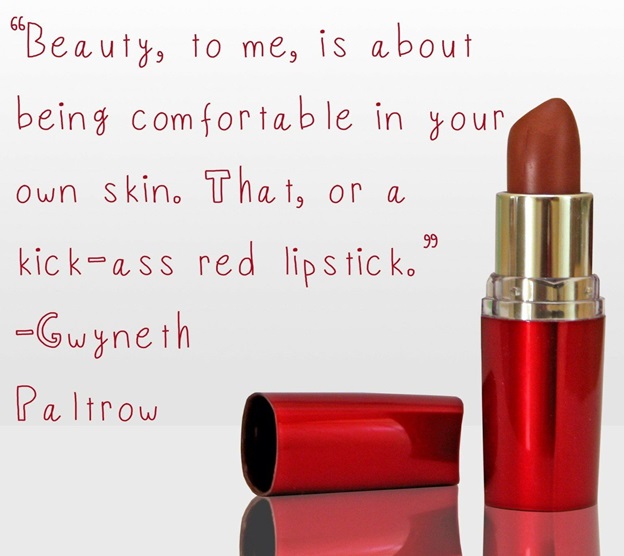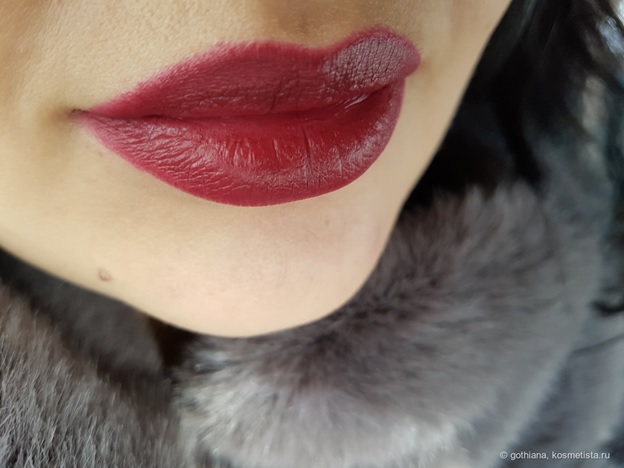Beginning a cosmetics organization is a dream that many human beings share, and today’s technology makes it less complicated than ever! Absolutely anyone can discover ways to increase a loyal following and build a powerful marketing approach. And with the many choices of available options for personal label cosmetics corporations, you don’t need to manipulate the manufacturing technique.
Private label cosmetics organizations commonly provide several degrees of service depending on your finances. The simplest entails selecting products and packaging from stock options in which formulations, product packaging, or even the product name are already predetermined by means of the manufacturer.
In this example, they’ll put your organization name and brand on their stock formulations to customize it. On the opposite of the price spectrum, everything is customizable, from the product components to the packaging and branding. How custom-built your product becomes is basically determined by how a good deal you’re willing to spend.
Private label cosmetic producers are commonly pretty willing to send out samples to potential clients. Once you’ve determine your search to a handful of private label makeup manufacturer, attain out to everyone and request samples of the products you’re most inquisitive about. There surely is no substitute for testing actual samples yourself.
Receiving samples of lipstick, concealer, and different cosmetics to check out is the exceptional way to end up familiar with manufacturers’ product quality. Creating a new brand may be very private, so taking the time to pick out merchandise that satisfy your requirements and constitute your name well is virtually helpful.

Primary works for producing
At the beginning, you may not need to provide a huge amount of every product in your beauty line. Especially in the course of the piloting phase of your advertising efforts, you could now not be in a condition to place a large order. Some producers are greater inclined than others to run small batches, so search for a low-minimum or no-minimum private label cosmetics employer.
In case your makeup line has a specific emphasis including as truthful trade, ensure the private label corporation you choose is capable of observe the certification necessities needed to make your brand stand out. In case you are inquisitive about launching a natural, vegan, truthful Trade, or cruelty-free line, you will want to make sure your products are produced in accordance with your selected certifications.
Hearing and Prototype Production
That is the level in which the private label producer and purchaser sit collectively to speak about the project information. This is a good time to collect records from as many businesses as possible to discover the best organization for your challenge.
After the info are agreed upon by both people, the production of the prototypes may start. At some point of this phase, one of a kind formulation are produced as prototypes earlier than moving into the production of the real product.

Quotation, Placing Orders and Production & Delivery
With the formulation finalized, the private beauty label producer will send the customer a quotation based totally on the elements and packaging substances used. After reviewing the very last citation and if the client consents with the proposed rate, both parties can sign a settlement and the consumer can place a purchase order.
Following confirmation of the charge, the manufacturing phase can begin. The period of the production process varies from producer to manufacturer, however you could assume somewhere between 2-4 months for an eastern manufacturer
Surveying some ingredients in lipstick with rose formula
Hydrogenated Polyisobutene
It is emollient and viscosity controlling. A synthetic liquid oil which can update mineral oil or silicone oils within the beauty formulation. There are unique grades relying on the molecular weight ranging from very light, volatile, non-residue leaving ones to extra substantial, mild residue leaving ones.
Other than leaving the skin soft and smooth, it is also used as a waterproofing agent in sunscreens and as a shine enhancer in lip gloss formulation.
C12-15 Alkyl Benzoate
It is emollient and antimicrobial/antibacterial. A regularly used emollient with a mild and silky feel. It is very slight to each skin and eyes and spreads well and without problems. It is often used in sunscreens as it’s also a fantastic solvent for sunscreen sellers.
Polyethylene
It is viscosity controlling. Polyethylene is the maximum commonplace plastic in the world. It is a terrific versatile polymer and when used in cosmetics, it is often known as micro beads. Well, it used to be referred to as micro beads, because it was banned in 2015 in the “Micro bead-Free Waters Act” due to the small plastic spheres gathering inside the waters and looking like food to fish.
But being flexible means that polyethylene does no longer simplest come as scrub debris however additionally as a white wax. In its wax-shape, it is nonetheless proper, alive and pretty popular. It thickens up water-free formulas, will increase hardness and enhances the melting point of emulsions and water-less balms. It is particularly not unusual in cleansing balms and stick-kind makeup merchandise due to its capability to add body, hardness and slip to those formulas.
Argania Spinosa Kerne
It is antioxidant and emollient. In terms of beauty oils and hype, argan oil is for certain leading the way. We have to admit we’ve got a few trouble figuring out why this oil enjoys the sort of unique miracle status.
Not that it’s now not true, it is good, even outstanding however analyzing the research about argan and a bunch of different plant oils we just do no longer see the great, particular differentiating component. All in all, argan oil is an actual goodie however we do no longer absolutely recognize the special miracle popularity it enjoys.
Benzophenone-3 – icky
It is sunscreen. A chemical sunscreen factor that absorbs UVB and shorten UVA rays (280-350nm) with its peak protection at 288 nm. In contrast to many different chemical sunscreens, it is highly strong but its UV absorbing capabilities are susceptible so it usually needs to be combined with other sunscreen factors for correct protection. More frequently than now not, it is used as a photo stabilizer rather than a proper sunscreen factor as it could defend formulation properly from UV harm.
Concerning safety, BP-3 is extremely arguable. First, its molecules are tiny (228 Da) and really lipophilic (oil loving) and those residences bring about excellent absorption. The problem is that you want sunscreens at the pinnacle of your pores and skin and now not in your bloodstream, so for BP-3 this is a trouble. In fact, it absorbs so properly that 4 hours after application of a sunscreen product with BP-3, it could be observed in urine.
Butyl Methoxydibenzoylmethane
It is sunscreen. The well-known Avobenzone. It is a typical snowflake as it is the simplest globally available chemical sunscreen agent that offers right UVA safety. It is far the global gold standard of UVA protection and is the most used UVA sunscreen inside the world. It offers superb protection across the whole UVA variety with a maximum protection at 360 nm.
The problem with it, though, is that it is not photos table and declines in the sunlight. Wikipedia tells us that Avobenzone loses 36% of its UV-absorption potential after just one hour of sunlight.
For safety, Avobenzone has a quite good safety profile. It counts as non-exciting, and in contrast to some different chemical sunscreens, it indicates no estrogenic effect. The maximum concentration of Avobenzone allowed is 5% within the EU and 3% in the US.
Tocopheryl Acetate
This is antioxidant. It’s the maximum usually used version of natural vitamin E in cosmetics. You can examine all about the pure shape here. Pursuant to some of well-known dermatologists, while Tocopheryl acetate is greater stable and has an extended shelf life, it’s additionally extra poorly absorbed by the skin and might not have the similar wonderful photo shielding consequences as natural Vit E.
Phenoxyethanol
It is preservative. It’s pretty plenty the contemporary IT-preservative. It’s safe and mild, but even greater importantly, it’s not feared by everyone without scientific reason Paraben. It’s no longer something new: it changed into introduced around 1950 and today it able to be used up to 1% globally. It is able to be discovered in nature – in green tea – however the version utilized in cosmetics is synthetic.
Aside from having a very good protection profile and being quite gentle to the skin it has a few different blessings too. It may be used in many forms of formulations because it has amazing thermal stability (may be heated as much as 85°C) and works on an extensive range of pH levels (ph 3-10).
It’s frequently used together with ethylhexylglycerin because it properly improves the preservative activity of phenoxyethanol.
Synthetic Fluorphlogopite
It is viscosity controlling. Artificial Fluorphlogopite is the artificial model of the terrific normally used mineral, Mica. The gain of being artificial is that it has a greater consistent quality, fewer impurities and an excellent decrease heavy metal content than Mica. It is also more hyaline and has progressed light reflection.
The two foremost use instances for artificial Fluorphlogopite is getting used neat as an advanced “filler” or skin tone enhancer or it may additionally function as a base for multi-layered, composite pigments like pearl effect pigments wherein it is lined with one or greater layers of metal oxide, most generally titanium dioxide.
Silica
It is viscosity controlling and absorbent/mattifier. A white powdery material that is the primary element of glass and sand. In cosmetics, it’s often in merchandise which might be speculated to save your skin matte because it has great oil-absorbing competencies. It’s also used as a helper substance to thicken up products or suspend insoluble debris.
Mica
It is colorant. An extraordinary flexible and not unusual mineral powder that comes in exceptional particle sizes. It is far a multi-tasker used to improve skin feel, growth product slip, deliver the product light-reflecting properties, enhance pores and skin adhesion or serve as an anti-caking factor.
It is also the most normally used “base” material for layered composite pigments including pearl-impact pigments. In this case, mica is lined with one or more metal oxides (most usually titanium dioxide) to gain pearl effect via the physical phenomenon called interference.
Ci 77499
It is colorant. Black Iron Oxide is the exquisite not unusual inorganic pigment that controls the darkness of your basis or offers the blackness to your mascara. Combined with red and black iron oxides, it is critical in all “flesh-toned” makeup products.
Ci 42090
It is also named as Blue 1 and its function is colorant. CI 42090 or Blue 1 is a great typical artificial colorant -n in cosmetics & food. Used separately, it provides an exquisite smurf-like blue color, blended with Tartrazine, it presents the fifty shades of green.
Ci 77891
It is also named as Titanium Dioxide and its function is colorant. Ci77891 is the color code of titanium dioxide. It is a white pigment with first rate shade consistency and interspersibilty.

Ci 19140
It is also named as Tartrazine, Yellow 5 and its function is colorant. Ci 19140 or Tartrazine is an exquisite commonplace colorant in skincare, makeup, medicine & food. It’s an artificial lemon yellow it truly is used by its self or combined with different colors for unique colors and shades.
FDA says it’s viable, however rare, to have an allergic-kind reaction to a color additive. As an instance, it mentions that Ci 19140 may additionally purpose itching and hives in a few people but the colorant is continually classified so that you can keep away from it in case you are susceptible.
Tin Oxide
It is also named as CI 77861 and its functions are colorant, abrasive/scrub and viscosity controlling.
Tin Oxide is frequently used while dealing with so-known effect pigments, problematic composite pigments which could do coloration travel (alter color relying on the viewing angle) or grant more than one shade impact.
It’s often found along Mica (as a base material) and Titanium Dioxide (as a coating) to provide a smooth, pearlescent effect.
Other than that, the authentic EU INCI database lists its uses as being a bulking agent to boom the volume of merchandise, however being a part of composite impact pigments is a much more typical use issue.